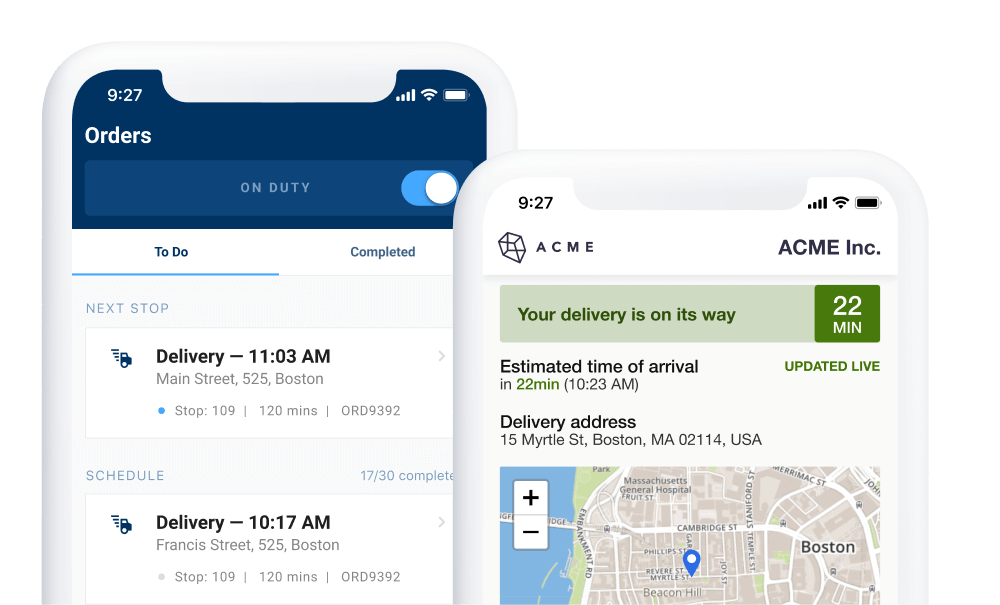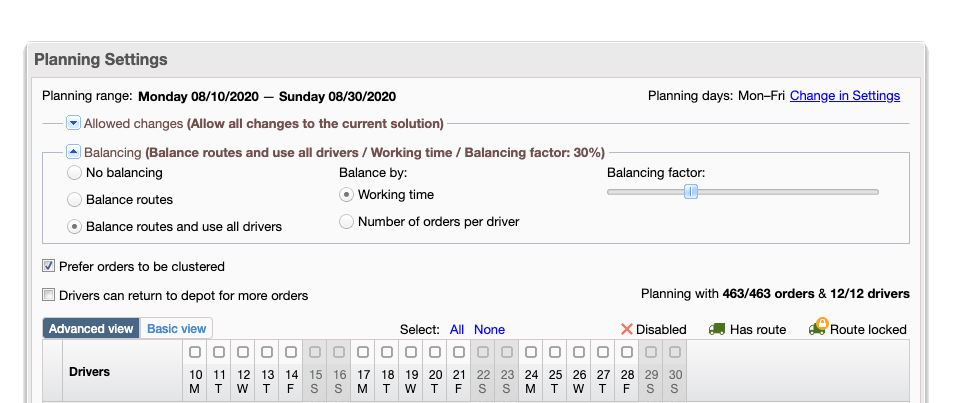What Is a Fleet Manager? Responsibilities, and the Role Software Plays in Fleet Management in 2024

According to the latest FleetOwner data, company-owned fleets in the US can reach up to 130,573 vehicles. But even a smaller fleet represents millions of dollars in value and a unique set of challenges.
From keeping vehicles maintained and operational at all times to ensuring driver compliance with regulations, a fleet manager’s job — managing fleet operations from start to finish — is a complicated one.
Without the right experience and the right tools, it’s impossible for a fleet manager to do their job effectively.
And good luck finding those on your own on the internet, it’s way worse than searching for a needle in a haystack.
But don’t worry, you don’t have to go it alone.
We’ll cover the core responsibilities of a fleet manager, introduce the right software, and show how it can help improve your fleet’s efficiency and profitability.
To navigate to the section which interests you the most, click below:
- What Is a Fleet Manager?
- 4 Main Duties of a Fleet Manager
- The Most Significant Challenges of a Fleet Manager
- How OptimoRoute Makes a Fleet Manager’s Job Easier (and Helps Improve Your Bottom Line)
What Is a Fleet Manager?
A fleet manager is the person in control of all aspects of a company’s fleet, from hiring and driver HR to maintaining maximum fleet efficiency at all times.
Basically their job is to effectively manage vehicles, drivers, and other assets, and make sure that your drivers are as efficient as possible.
Doing all this manually is next to impossible. Software plays a big role in effective fleet management — explore the challenges of a fleet manager below to see just how big.
4 Main Duties of a Fleet Manager
The fleet manager’s job is to manage all things transportation, and that includes both the vehicles and the drivers. Here are some of the specific duties included in a fleet manager’s portfolio.
1. Procurement and maintenance of vehicles for the fleet
The first duty of the fleet manager is to ensure that the company has the right number (and type) of vehicles, and that these vehicles work properly and safely.
Fleet managers purchase or lease vehicles based on specific transportation requirements (such as load capacity and mileage), and then schedule regular maintenance throughout the lifecycle of the vehicle to ensure driver safety and fleet performance over time.
2. Registration, licensing, and compliance
Compliance is a significant challenge for trucking and transportation companies. According to a 2019 ATRI report, 27.2% of trucking companies struggle with HOS (Hours of Service) compliance.
Long-haul carriers in particular face a lot of regulations. For example, all fleet vehicles must have working ELD devices, and all drivers must meet HOS requirements.
3. Driver management
Another key duty of the fleet manager for many companies is to manage the drivers. This includes hiring, training, and scheduling, as well as day-to-day communications and route management.
This role is sometimes filled by a fleet dispatcher at bigger companies, though smaller companies often combine the roles of dispatcher and manager.
4. Improving operational efficiency
Finally, it’s the job of the fleet manager to oversee and analyze operations with the aim of improving processes and ultimately increasing the overall efficiency of the fleet.
The fleet manager reviews driver records to see if they’re properly following routes, prepares procedures for common issues (like accidents, driver absence, or being unable to complete a delivery), and utilizes tools such as fleet management software to systematize or automate daily workflows.
The Most Significant Challenges a Fleet Manager Faces

A great fleet manager keeps a business’ fleet running as efficiently as possible — maximizing its capacity and the profitability of the company.
Fleet management is a demanding job, with many challenges relating both to a fleet’s vehicles, and of course, the drivers.
Let’s take a closer look at them.
Planning and optimizing routes to minimize mileage and fuel consumption
According to a study by TomTom, 66% of fleet managers struggle to keep fuel costs down. A great fleet manager plans and optimizes routes to reduce mileage, improve fuel efficiency, and minimize vehicle wear and tear.
With OptimoRoute, you can import the order list and let our route optimization software handle the rest. It accounts for service areas, driver schedules, vehicle capacities, delivery time windows, loading times, and many other real-world restrictions that can hamper cost reduction efforts.
Balancing workloads to keep existing drivers happy
High driver turnover is a major challenge for commercial fleets, with an average rate of 96% in Q3 2019 according to American Trucker.
To keep them around, any successful fleet manager must balance workloads, maximize driver utilization, and keep overtime to a minimum.
Minimizing vehicle downtime with preventive maintenance and repairs
Fleet managers must also minimize vehicle downtime with preventive vehicle maintenance, urgent repair plans, and more.
You can reduce vehicle breakdowns with a telematics solution and a healthy dose of erring on the side of caution. Read our post on fleet management for more information on keeping your vehicles in tiptop shape.
Analyzing driver performance and vehicle utilization
To improve performance and cost savings, it’s important that a fleet manager has the tools to analyze driver performance.
OptimoRoute gives Jennifer all the data she needs at her fingertips, highlighting high performers, drivers with few loads, and more. She can also compare driven with planned routes to see if anyone veered off the planned route too much.
How OptimoRoute Makes a Fleet Manager’s Job Easier (and Helps Improve Your Bottom Line)
OptimoRoute isn’t just a simple route planning software tool.
It’s kind of like the Swiss Army knife in a fleet manager’s toolbox. But instead of scissors and a magnifying glass, you get features that make the life of any fleet manager much easier.

Below, we cover a few vital ways it helps fleet managers save time, improve efficiency and hit their KPIs.
Automatically plan efficient routes, even without local experience
With smarter software, it’s now possible to plan efficient routes even without knowing every inch of your delivery area.
When launching their own delivery service, Local Roots, a New York-based local food distributor, had to start from scratch. But the lack of an experienced team with fleet managers and dispatchers didn’t stop them.
Thanks to OptimoRoute’s smart features, they scaled to 1,000 deliveries per week and a fleet of 13 drivers in just a single month.
Their fast growth was possible because of OptimoRoute’s unique ability to tackle real-world variables. Routes and schedules are automatically generated based on the realistic ETAs for each individual delivery.
It automatically plans and adjusts routes with service areas, vehicle capacities, delivery time windows, and client relationships in mind.
In 2021, even inexperienced staff can effectively manage a fleet of vehicles and drivers while scaling the number of customers.

Reduce your operational costs by 30%
Increase delivery capacity by 43%
Plan 7x faster
Plan balanced, compliant driver schedules and routes for up to 5 weeks in advance
Are drivers frustrated with sporadic schedules? Do you receive orders weeks or months in advance? Struggle to forecast available load and driver capacity?
Using OptimoRoute, you can plan optimal schedules up to five weeks ahead, with optimally balanced workloads for all your drivers.

The driver schedules and routes also include daily lunch breaks and mandated driving breaks for long-haul truckers. (You can set the break duration and break range at the driver level to ensure compliance with relevant regulations.)
The weekly routes and schedules also respect employee availability (PTO, sick leaves, weekends, and more).
You can even include tasks or deliveries that are restricted to a specific date, date range, or day of the week.
Longer plans also account for all standard constraints (time windows, skills, service areas, and more).
Analyze every driver’s performance with unique OptimoRoute features
Do you have any idea how your drivers are actually driving?
OptimoRoute’s breadcrumbs feature shows you both the planned and real, driven routes. A colored line shows the driver’s planned route, and a dotted line the actual driven route.

You can use it to find problems with driver performance and potential areas for improvement in your routes.
Beyond breadcrumbs, OptimoRoute offers a complete analytics suite which will help you gain new insights into driver performance and workloads.
Our vehicle utilization view shows if your company is making efficient use of each vehicle in the fleet or not.
These tools are integral to a business as it grows. Beyond a certain scale, following up with each driver is no longer practical.
OptimoRoute can help you create productive driver behavior and relationships, and streamline your whole operation to boost your bottom line.
Use real-time fleet tracking to better adjust to last-minute changes
What do you do if a customer cancels or changes an order? Chances are you jump straight on the phone and frantically try to reroute the affected drivers.
OptimoRoute changes that.
With real-time GPS-tracking of all drivers and vehicles, dispatchers and fleet managers can know where every driver is at all times. OptimoRoute’s vehicle tracking uses your drivers’ smartphones, with no need for expensive hardware, making fleet tracking easier than ever.
Plus, OR’s dynamic replanning lets you adjust driver routes with last-minute cancellations or new orders. You can then send the new delivery list directly to the driver’s app.
Last mile delivery fleets and their dispatchers and managers can use this feature to avoid delivery delays, and keep their customers happy.
Final Thoughts
While hiring the right fleet manager is essential for keeping a fleet running at max capacity, there’s only so much a human can do manually.
Without the right tools at their disposal, fleet managers will be stretched thin trying to overcome all their challenges, and complete their core responsibilities.
After all, they’re only human.
OptimoRoute eliminates time-consuming menial tasks, like mapping out routes and monitoring driver efficiency. That frees up more time for fleet managers to work on what matters.
To see how OptimoRoute can help your company’s fleet managers work more efficiently, and your company grow, start your free trial today.
Try OptimoRoute™ for Free
No installation or credit card required


